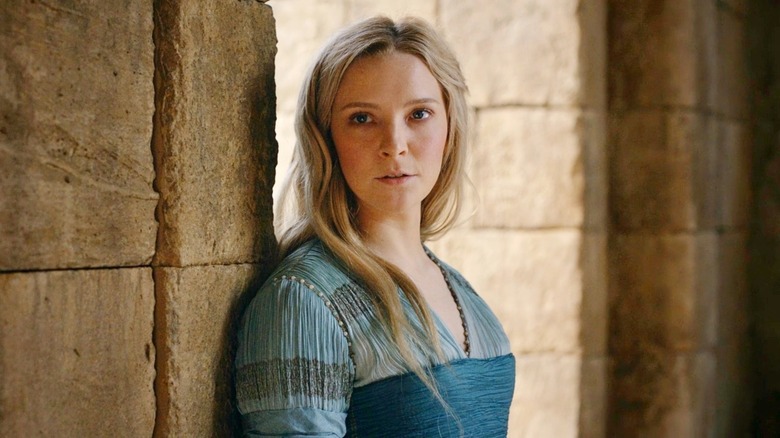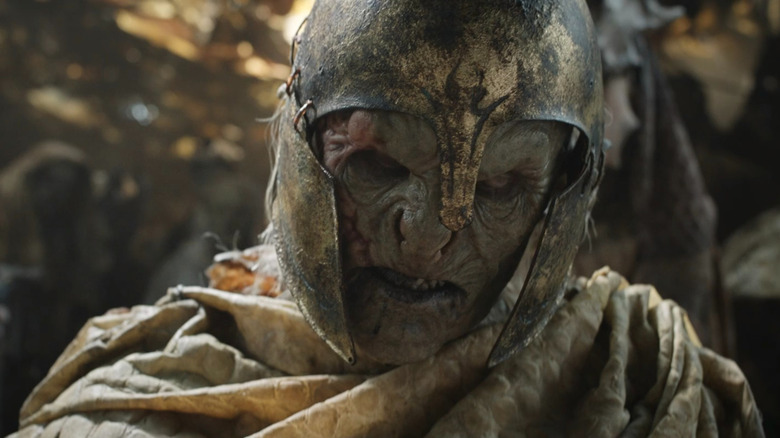How The 'Expectation' Of Peter Jackson's Lord Of The Rings Influenced The Rings Of Power [Exclusive]
Prequels can sometimes lack the tension that comes from not knowing what will happen in a good story, since the overarching outcome of the narrative is not usually in question. For Prime Video's "The Lord of the Rings: The Rings of Power," this proves doubly challenging in that it's a prequel to a prequel, set before the events of "The Lord of the Rings" and its precursor "The Hobbit," both of which have already received the cinematic treatment from director Peter Jackson. We know certain things are following a predetermined course, but the 3,000-year gulf of time that separates "The Rings of Power" from "The Lord of the Rings" has made the map of Middle-earth slightly less familiar.
With "The Rings of Power," the audience's expectation of how Middle-earth's future will look is something that influenced not only the show's writers, but also other members of the behind-the-scenes crew that has brought it to life as the most expensive TV series of all time. In an exclusive interview with /Film's Vanessa Armstrong, "Rings of Power" head of prosthetics, Jamie Wilson discussed looking back to the future, as it were, while leading the team responsible for crafting the prosthetics that bring the show's creatures to life — all those harfoots, gnarly orcs, and such.
"We're in a different age of Middle-earth [from the 'Lord of the Rings' movies]," Wilson said, "but you still have to hark back to them, because at the end of the day, the ages that we've already seen through past productions has created an expectation."
'Hero lead orcs'
Wilson worked as an on-set coordinator and production manager as part of the Wētā Workshop crew on Jackson's original "Lord of the Rings" movie trilogy, and he was further credited as the armor and weapons production manager for the subsequent "Hobbit" trilogy. Having a crew member like that on board "The Rings of Power" helps ensure a consistent look across the TV show and movies (though legally and canonically speaking they are "distinct and separate entities," since the movies are owned by Warner Bros. and the TV show is owned by Amazon).
There are, as Wilson explained, practical considerations that he and his team have to take in mind when working up the prosthetics:
"There's the reality of filmmaking — it will always be a man in a suit, so you can only go so far. And that person, especially with this production, has some pretty heavy running around and stunt work and action and fighting sequences to do, so you have to make it something they can actually perform in. We have a tiered system — you create your hero lead orcs, and then off the back of that, you have some stuntees [the orcs who take part in orc-related stunts on the show], and then you get into the mass extras."
It's interesting to hear orcs described as "hero leads," but of course, every character is the hero of their own story. With a budget north of $450 million, "The Rings of Power" has put a lot of money up onscreen, and it offers up plenty of visual splendor for fans. It would be easy to build a world like this completely out of weightless CGI, but it's nice to see so much attention being given to the creatures in "The Rings of Power," who truly do feel like tangible Middle-earth inhabitants.
"The Lord of the Rings: The Rings of Power" is now streaming on Prime Video, with new episodes released every Friday.

